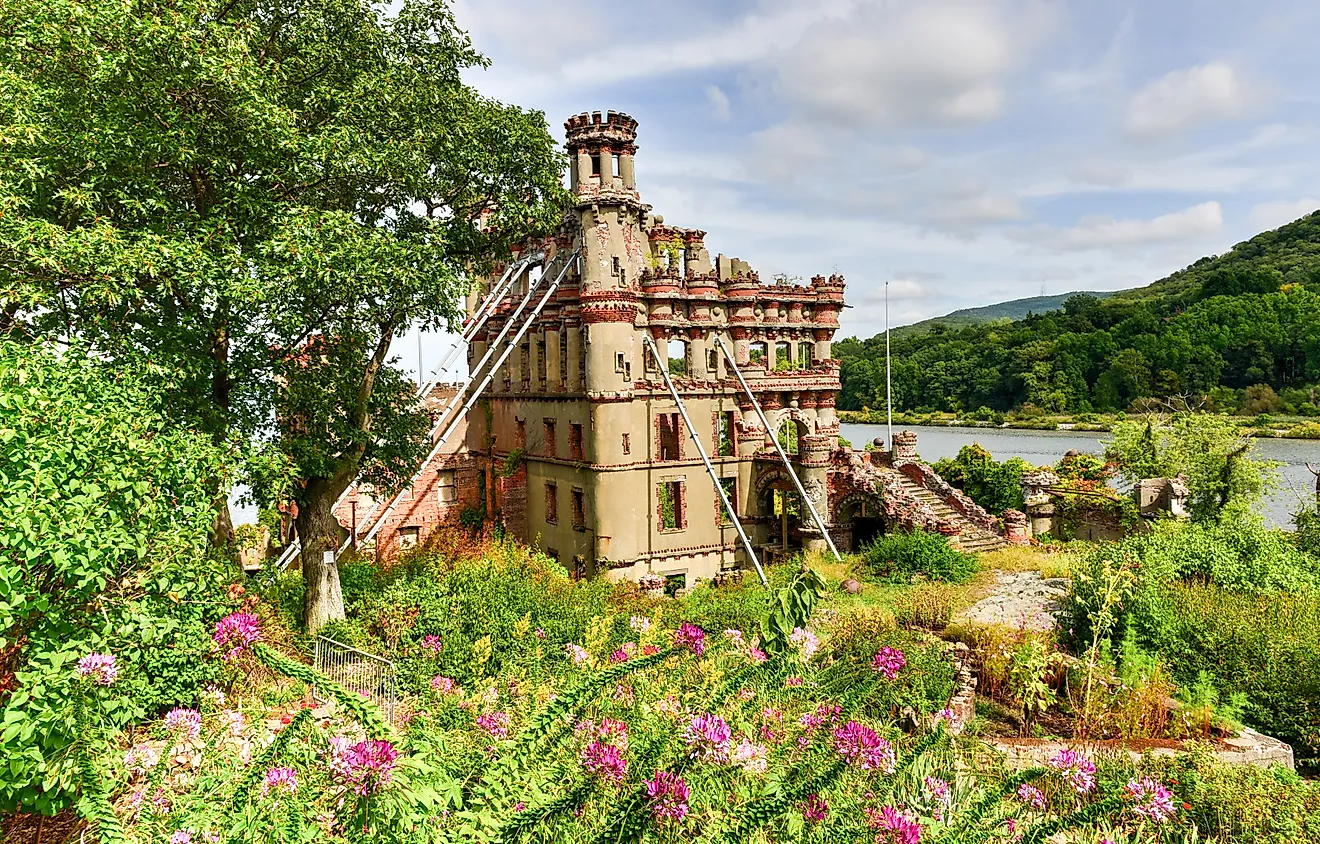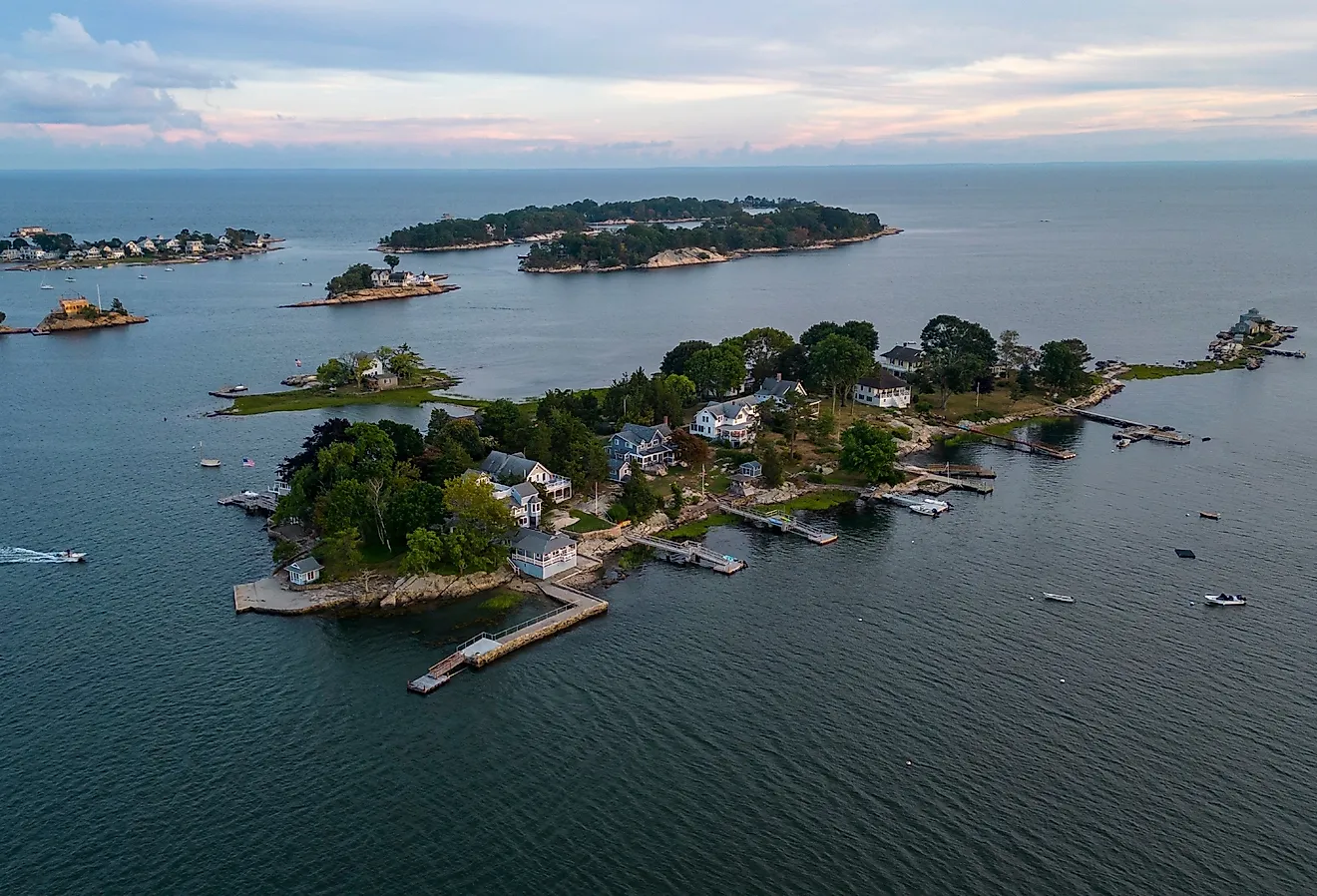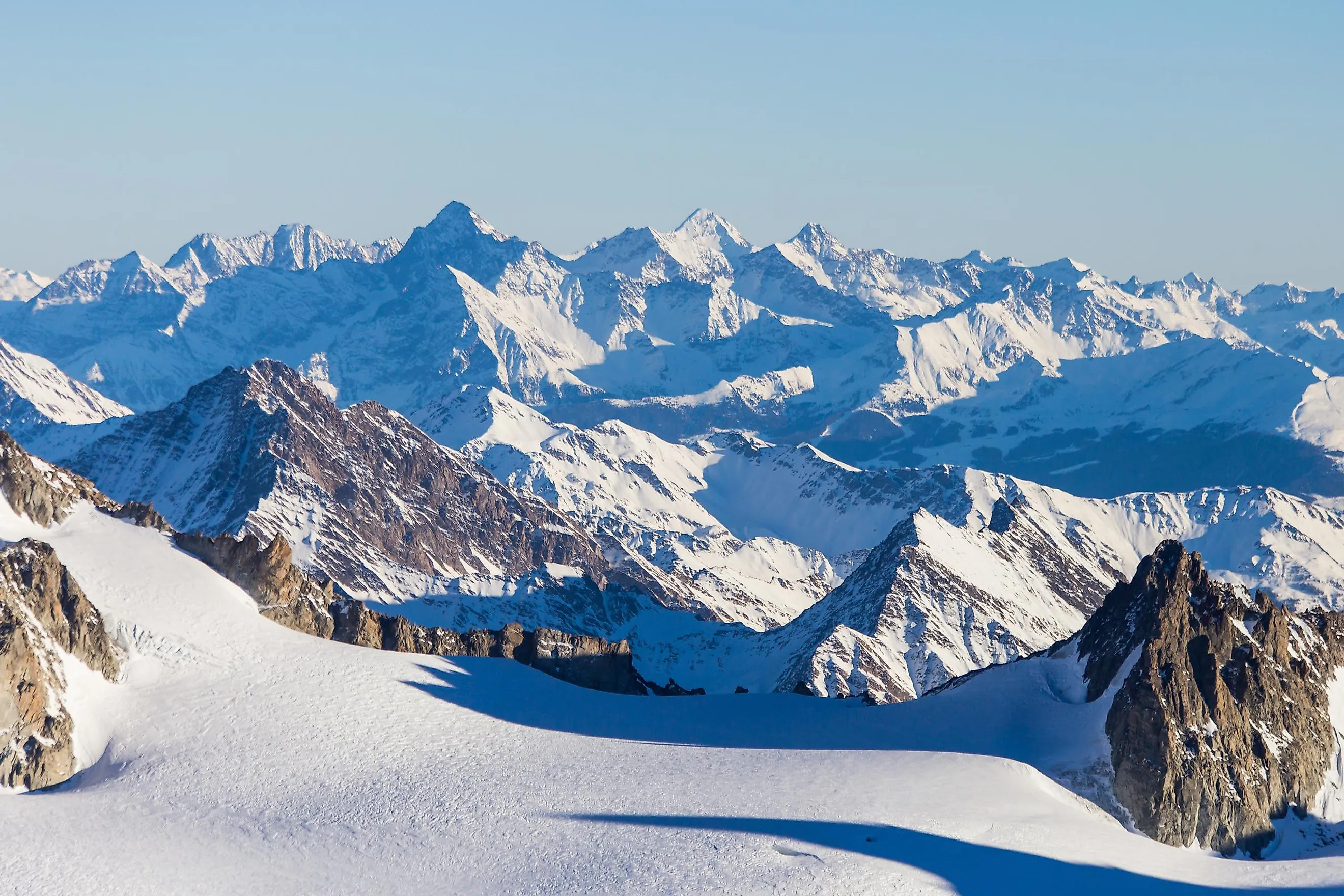
Alps Mountain Range
The Alps are an extensive mountain system that is located in south-central Europe. These mountain ranges extend for about 1,200 km in a crescent shape across eight Alpine countries, namely Austria, France, Germany, Italy, Liechtenstein, Monaco, Slovenia, and Switzerland.
Where Are The Alps?
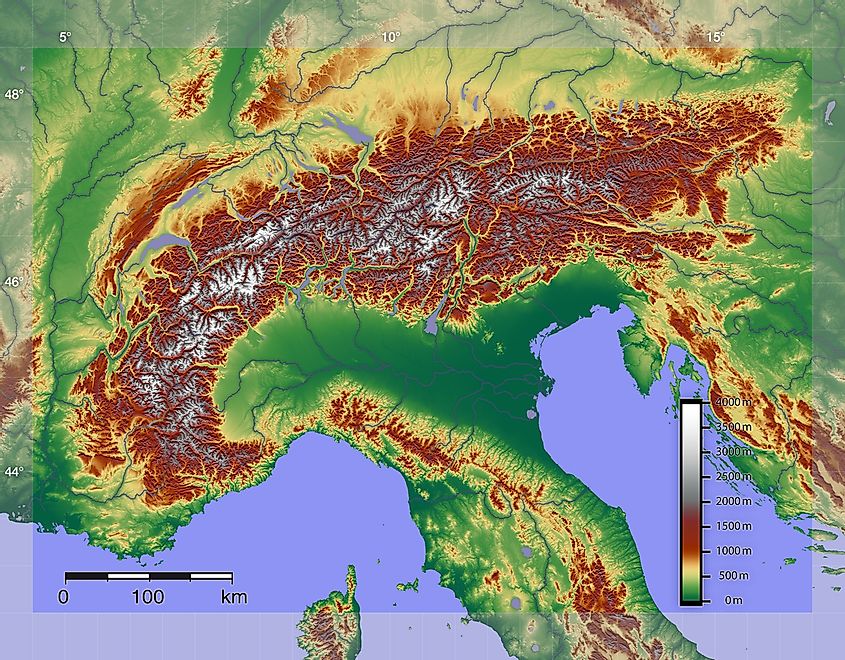
The Alps mountain range stretches from the north of the Mediterranean Sea near Monaco in southern France into Switzerland, then through northern Italy into southern Germany, and towards Vienna in Austria. The mountain range then continues downwards through the countries of Slovenia, Croatia, Bosnia and Herzegovina, Serbia, and Montenegro. The Alps mountain range ends in Albania on the rugged Adriatic Sea coastline.
Geography
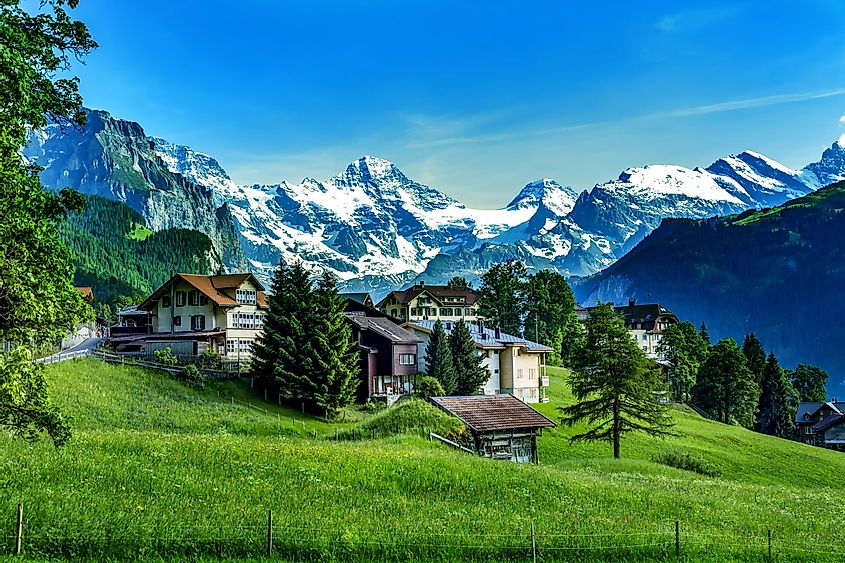
The Alps cover a total area of about 207,000 km2 and have a maximum width of about 250 km at its widest point that is situated between Verona in Italy and the Garmisch-Partenkirchen in southern Germany. The Alps is a discontinuous mountain range and comprises numerous peaks and valleys that are of varying heights and depths. The 22.6 km-long Aletsch Glacier located in the Valais canton of Switzerland is the largest glacier in the Alps. The Alps mountain range can be divided into three broad sections: the Eastern, Central, and Western Alps.
Located mainly in Austria but also Germany, Italy and Slovenia, the Eastern Alps also comprise the Bavarian Alps, the Carnic Alps, the Dinaric Alps, the Dolomite Alps, and the Julian Alps. The Central Alps occupy the area between the Great St Bernard and Brenner passes and comprises the Bernese and Glarus Alps on the northern side and the Lepontine, Ötztal, Pennine, and the Rhaetian Alps in the southern part. The Western Alps extends from the Maritime Alps near the Mediterranean coast to the Great St Bernard Pass, straddling the borders of France, Italy and Switzerland. It comprises of the Cottian, Ligurian and the Graian Alps, as well as the Mont Blanc massif and Valle d’Aosta.
Mont Blanc sits on the border of France and Italy and rises to an elevation of 4,808 m, making it the highest peak in the Alps Mountain Range. Located on the boundary between Switzerland and Italy is Monte Rosa, which rises to an elevation of 4,634 m and is the second-highest peak in the Alps. Some of the other notable mountain peaks include the Matterhorn, Dufourspitze, Finsteraarhorn, Weisshorn, Grossglockner, Zugspitze, and Triglav.
Some of the notable rivers that flow in the Alpine Mountain region include the Inn, Po, Rhine, and Rhône rivers. Several lakes are also found here including Lake Annecy, Lake Constance, Lake Garda, Lake Geneva, etc.
The Alps Mountain range was formed millions of years ago during collisions between the Eurasian and the African tectonic plates. This collision generated huge pressure resulting in the upliftment of the sedimentary rocks thereby creating the characteristic Alps mountain folds.
Some of the major passes in the Alpine mountains are the Brenner Pass, the Col de I’lseran, Col Agnel, Mont-Cenis, Great St. Bernard Pass, Gotthard, Semmering Pass, etc.
Wildlife

Several vegetation zones are found in the Alpine mountains. Mixed mountain forests including oak, beech, pine, poplar, chestnut, and birch trees thrive well in the lower mountain slopes, whereas coniferous forests are found in the higher altitudes. Many plants like crocus, primulas, rhododendron, and edelweiss also thrive well in the Alpine habitats. Some of the important mammal species that are found in the Alpine region are the ibex (Capra ibex), Alpine hare (Lepus timidus), red deer (Cervus elaphus), etc. The European lynx (Lynx lynx) and the marmot (Marmota marmota) have been successfully reintroduced in the Swiss Alps. The notable avian species that are found here include the Golden eagle, peregrine falcon, black grouse, black woodpecker, etc.
Economy
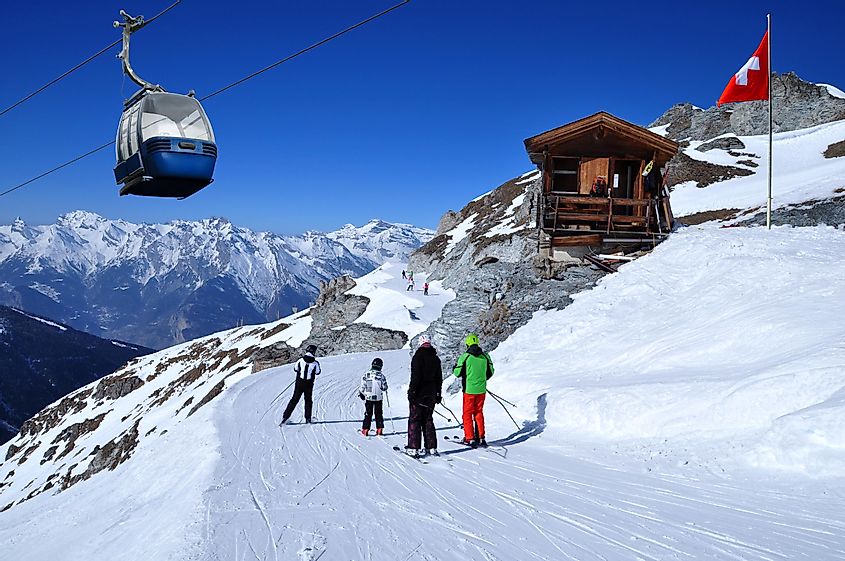
Currently, the Alpine region is home to about 14 million people in the eight main Alpine countries and is annually visited by more than 120 million tourists. Crops including fruits and wine grapes are cultivated in the valleys and in the foothills of the Alps. During the summer months, the flat upland regions provide pastures for the grazing of livestock. Some of the major economic activities in the Alpine region are tourism, dairy farming, mining of iron ore, and generating hydroelectric power.





